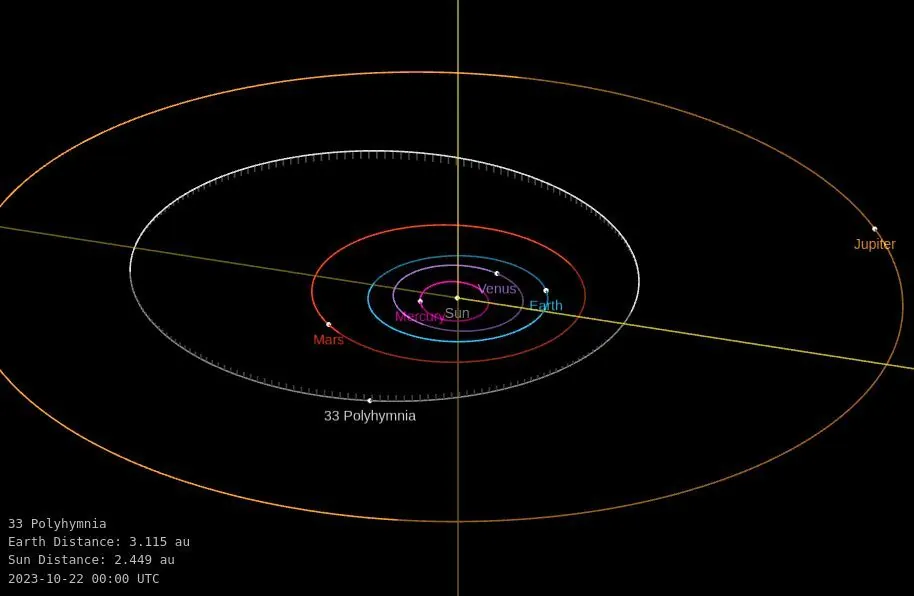A groundbreaking study by the University of Arizona reveals that asteroid Polyhymnia has a density exceeding that of any known elements on Earth. Led by Jan Rafelski, the research team used the Thomas-Fermi model to predict the existence of superheavy elements that could account for this extraordinary density. These findings not only challenge our understanding of the Periodic Table but also have significant implications for future asteroid mining endeavors.
Scientists at the Department of Physics, The University of Arizona, Tucson, USA, have published a study suggesting that ultradense asteroids may contain superheavy elements with an atomic number (Z) beyond the current Periodic Table. These unprecedented elements could be part of a proposed ‘island of nuclear stability’ at Z=164.
The study, led by Jan Rafelski and co-authored by Evan LaForge and Will Price, uses the Thomas-Fermi model of atomic structure. This model enables systematic exploration of atomic behavior beyond the known Periodic Table. Both LaForge and Price were awarded the prestigious Galileo Circle Scholarship earlier in 2023 for their contributions to this project.
The researchers concentrated on calculating the properties of superheavy elements, defined as those with Z > 104. Among these, elements with atomic numbers between 105 and 118 have been synthetically created but are unstable. However, their calculations suggest that elements around Z=164 could be stable and extremely dense, with a density ranging between 36.0 and 68.4 g/cm3.
In astronomical terms, objects with densities higher than osmium (Z=76) — which has a density of 22.59 g/cm3 — are classified as ‘compact ultradense objects’ or CUDOs. The asteroid 33 Polyhymnia, located in the main belt between Mars and Jupiter, is the most extreme example with a calculated density of approximately 75 g/cm3. Rafelski suggests that such objects could be composed of elements above Z=118 or even other types of ultradense matter.
The implications of this research extend to potential space mining endeavors. While no superheavy elements have been observed yet, their existence could motivate asteroid miners to explore these CUDOs for precious metals like gold. The study concludes that the possibility of obtaining such elements within our Solar System is “an exciting one.”
The researchers’ next steps include extending their model to explore more exotic substances, such as alpha matter, a condensate composed entirely of isolated helium nuclei (alpha particles). These future studies are expected to further enrich our understanding of the material composition of our universe.
Asteroid 33 Polyhymnia, discovered by French astronomer Jean Chacornac on October 28, 1854, has long been a subject of scientific interest. Located in the main belt between Mars and Jupiter, Polyhymnia has a highly eccentric orbit, one of the highest among lower-numbered minor planets. This eccentricity allows it to come relatively close to Earth at times, even reaching an apparent magnitude of 9.9 on September 8, 2014. Photometric observations have refined its rotation period to an extremely precise 18.60888±0.00029 hours, with an axial tilt estimated between 151 and 155 degrees. Polyhymnia’s orbit is in a 22:9 mean motion resonance with Jupiter, leading to a chaotic orbit with a computed Lyapunov time of 10 000 years.

These unique characteristics, along with its unprecedented density, make Polyhymnia a compelling subject for both scientific inquiry and potential asteroid mining.
References:
1 Superheavy elements and ultradense matter – LaForge, E., Price, W. & Rafelski, J. – The European Physical Journal Plus 138, 812 (2023). – September 15, 2023 –
Featured image credit: NASA/JPL, CNEOS
If you value what we do here, create your ad-free account and support our journalism.
Tropical volcanic eruptions disrupt Indian Ocean climate cycles for up to 8 years
Monday, October 30, 2023
Exceptionally bright gamma-ray burst offers new data on the formation of life-essential elements
Friday, October 27, 2023
New study explains how Kolumbo volcano’s eruption led to destructive tsunami in 1650
Friday, October 27, 2023
Study reveals Earth’s core may be leaking helium-3
Sunday, October 22, 2023
Chemical reactions triggered by Hunga Tonga eruption led to severe stratospheric ozone depletion
Sunday, October 22, 2023
New Zealand’s massive Taupō eruption dated by Antarctic ice core study
Sunday, October 15, 2023
Study fills significant gap in Earth’s rotation history with ancient solar eclipses
Sunday, October 15, 2023